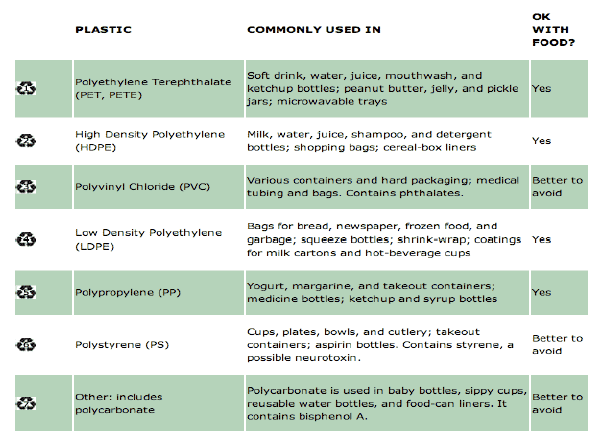Recycling Plastics
Only five percent of the plastics manufactured are recycled (this is why the Pacific Ocean is full of plastic).19 Our current system for recycling plastics is insufficient. Plastics are numbered from one to seven based on their chemical composition. The number is generally located on the bottom of the package.

20
This chart is particularly helpful because it tells you if the plastic is safe to use with food. As you can see with 3, 6, and 7 food safety is an issue. However, they continue to be widely used and not recycled for many reasons.
A product's ability to be recycled depends upon many variables: chemical composition, the market for the recycled product, proximity to recycling center, and cost. The most commonly accepted plastic at recycling centers are #1, #2, and #4. There is not a market for #3, #5, and #7 so they are discarded to landfills. Also, these plastics come in the form of things like shower curtains and pipes which people don't think to recycle so the demand is low. 7, on the other hand, is very difficult to recycle due to its chemical composition.
The after-market value of recycled plastic is of concern. A recycling center must be able to sell recycled plastic to a manufacturer that has the ability to process and use the recycled material. This is not always possible geographically or financially feasible for the recyclers or the manufacturers.
Sorting seems to be a major issue. If you don't remove caps, labels, and sort properly according to accepted numbers the entire batch will end up in a landfill as it requires different methods to recycle different types of plastics.21 The students will be sorting trash in the first student activity and creating a new coding system for plastics as they discover the diversity of plastic trash and inadequacies of our current coding system.

Comments: